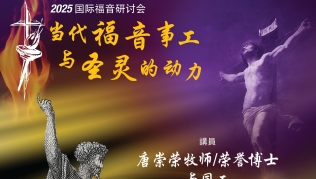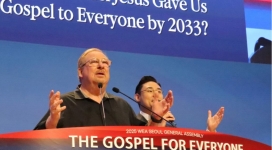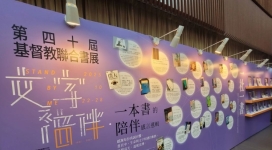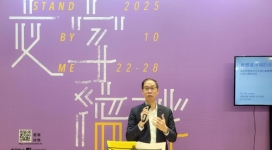Fragments of the past link Christianity with its Jewish heritage at a traveling exhibit for the Dead Sea Scrolls at a Jewish cultural center in the U.S city of Cleveland, Ohio.
Newly restored pieces from one of eight Dead Sea Scrolls give insight into life during the days of Jesus. The relics told about, in detail, Jewish rituals and rules at the second Temple – where Jews had worshipped 2,000 years ago.
The traveling "Cradle of Christianity: Treasures from the Holy Land" exhibit, which premiered Saturday, will remain open until Nov. 22.
Prior to the Ohio exhibit, the Israel Museum only displayed the artifacts in Jerusalem during Israel’s millennium celebration in 2000.
The museum’s co-founders, Milton and Tamar Maltz, collected US$1 million to move the exhibit to U.S. soil. Maltz museum curators hoped that at least 100,000 people would visit, including individuals from Christian communities who may not usually show interest in visiting a Jewish heritage museum.
"It's very significant that both Passover and Easter occur so soon after opening this exhibition. The community response has been inspiring and embracing," said Carole Zawatsky, the Maltz Museum's executive director, as quoted in an article from AP.
The exhibit also features archaeological discoveries owned by the Israel Antiquities Authority that date back to the era of the scrolls.
Various ossuaries, limestone holders made to hold bones, from Jesus’ time showed the name Yeshua, a name common at the time according to U.S. and Israeli biblical scholars.
A stone tablet bears the name, Pontius Pilate, the Roman governor who sentenced Jesus to die. Beside it is a burial ossuary, which would have held the remains of Jewish high priest, Caiaphas, who according to scriptures conspired with members of the Jewish Sanhedrin to arrest Jesus.
A human ankle bone with a large nail still embedded into it gives silent testimony to the brutality of Jesus’ crucifixion. It was discovered in a plain ossuary inscribed with the Hebrew name, Yehohanan son of Hagkol.
Of interest, says a visiting curator from the Israel Museum, is a collection of small, and dark bronze coins that were placed alongside a silver one.
"Every Jew had to bring each year a half shekel donation to the Temple," said Israel Museum curator David Mevorah, according to AP. "You can see half a shekel right here (the shiny, silver coin). But it's not a currency most people would carry in their pockets. So they would bring bronze coins or other currencies to be exchanged at the money changers who were sitting all around the Temple."
According to passages from the Book of Matthew in the Bible, Jesus had driven the money changers out of the market near the temple shortly after his arrival in Jerusalem.
"These eleven bronze coins are a commission for half a shekel. Jesus was very critical of that, because this was using holy donation for profit," explained Mevorah.
This marks the first time the Dead Sea Scroll fragments, on loan from the Israel Museum, traveled away overseas.
After the Ohio exhibition, the scroll will move to Florida at The Museum of Art Fort Lauderdale, and then to Atlanta at the Michael C. Carlos Museum of Emory University.





![[Exclusive] Rev. Dr. Richard Tin-Wo Cheung: walking between “charismatic” and “evangelical”](https://www.gospelherald.com/media/cache/thumbnail/7/23/72338sp_273w_150h_1x_1y.jpg)

